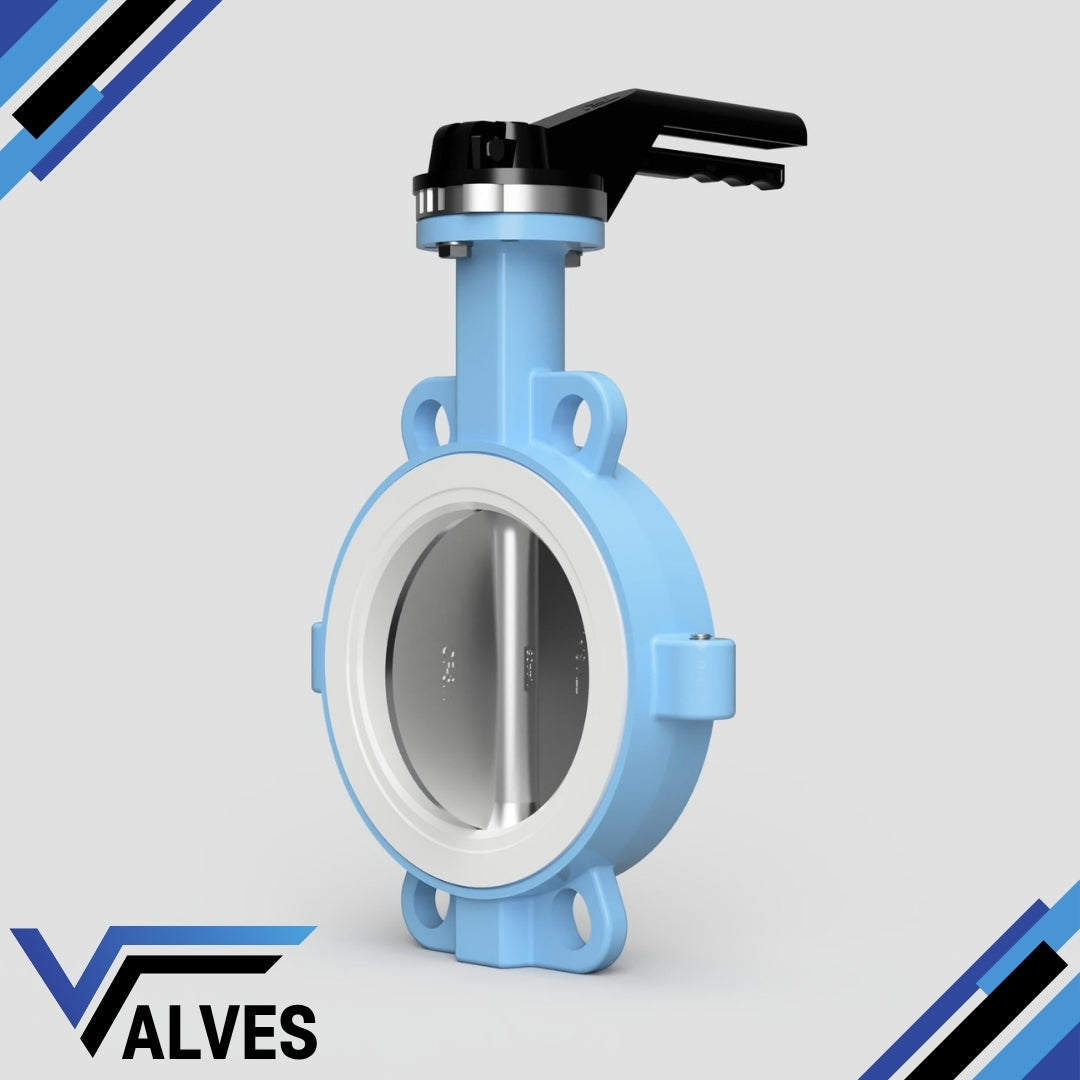Valves UK
TTV PTFE Seat Wafer Butterfly Valve
TTV PTFE Seat Wafer Butterfly Valve
Couldn't load pickup availability
The TTV PTFE Seat Butterfly Valve is engineered for superior performance in corrosive and demanding environments. Designed with a precision-molded PTFE (Polytetrafluoroethylene) seat, this valve offers exceptional chemical resistance, making it ideal for applications where aggressive media are present. The PTFE seat ensures a tight seal, providing reliable and leak-free operation across a wide range of temperatures and pressures.
Key Features:
-
High Chemical Resistance:
- The PTFE seat in the TTV Butterfly Valve is resistant to a wide variety of chemicals, including acids, alkalis, solvents, and gases, ensuring long-lasting durability in challenging environments.
-
Reliable Sealing:
- Engineered for precision, the PTFE seat delivers an excellent seal, minimising the risk of leakage and ensuring safe and efficient flow control in your system.
-
Low Torque Operation:
- The valve is designed to operate smoothly with minimal torque, reducing wear and tear on the actuator and extending the valve’s operational life.
-
Wide Temperature Range:
- The TTV PTFE Seat Butterfly Valve can perform reliably in a broad temperature range, making it suitable for both high-temperature and cryogenic applications.
-
Versatile Application:
- Suitable for use in a variety of industries, including chemical processing, pharmaceuticals, food and beverage, and water treatment, where corrosion resistance and cleanliness are paramount.
-
Compact and Lightweight Design:
- The compact design of the TTV Butterfly Valve allows for easy installation in space-constrained environments, while its lightweight construction reduces the load on the piping system.
Applications:
- Chemical Processing: Ideal for handling corrosive chemicals and aggressive media without compromising the integrity of the system.
- Pharmaceutical Industry: Ensures contamination-free operations in processes requiring high purity and stringent hygiene standards.
- Food and Beverage: Suitable for use in applications where hygiene and resistance to cleaning agents are critical.
- Water Treatment: Provides reliable performance in systems managing both potable and non-potable water, as well as in wastewater treatment.
Why Choose TTV PTFE Seat Butterfly Valve?
The TTV PTFE Seat Butterfly Valve is the preferred choice for professionals who demand high performance, reliability, and durability in their flow control systems. With its excellent chemical resistance, tight sealing capabilities, and versatility, this valve is designed to meet the rigorous demands of various industrial applications, ensuring a safe and efficient operation.
Share

FAQ's
What is the difference between a valve and an actuator?
What types of actuators are available?
The main types of actuators are:
Pneumatic actuators – use compressed air for fast, reliable operation.
Electric actuators – use electrical power for precise control.
Hydraulic actuators – use fluid pressure for high-torque applications.
Each type offers unique advantages depending on the environment, media, and system control needs.
How do I choose the right actuator for my valve?
To select the correct actuator, consider:
Valve type and torque requirement
Power source available (air, electric, or hydraulic)
Operating environment (temperature, humidity, hazardous area)
Control signal type (on/off or modulating)
Matching actuator torque and compatibility with the valve’s ISO mounting ensures reliable performance.
What are the main types of valves used in automation?
The most common valves in automated systems include:
Ball valves – for tight shutoff and quick operation.
Butterfly valves – for larger flow control with compact design.
Globe valves – for precise throttling and flow regulation.
Check valves – to prevent backflow.
Gate valves – for full bore flow isolation.
What’s the difference between a double-acting and spring-return actuator?
Double-acting actuators use air (or power) to both open and close the valve.
Spring-return actuators use air to open (or close) the valve, and a built-in spring to automatically return it to a safe position when power or air is lost — ideal for fail-safe operation.
How often should valves and actuators be serviced?
Regular maintenance intervals depend on operating conditions, but a good rule of thumb is to inspect every 6–12 months.
This includes checking for leaks, lubrication, seal wear, and actuator responsiveness to prevent unexpected downtime.

